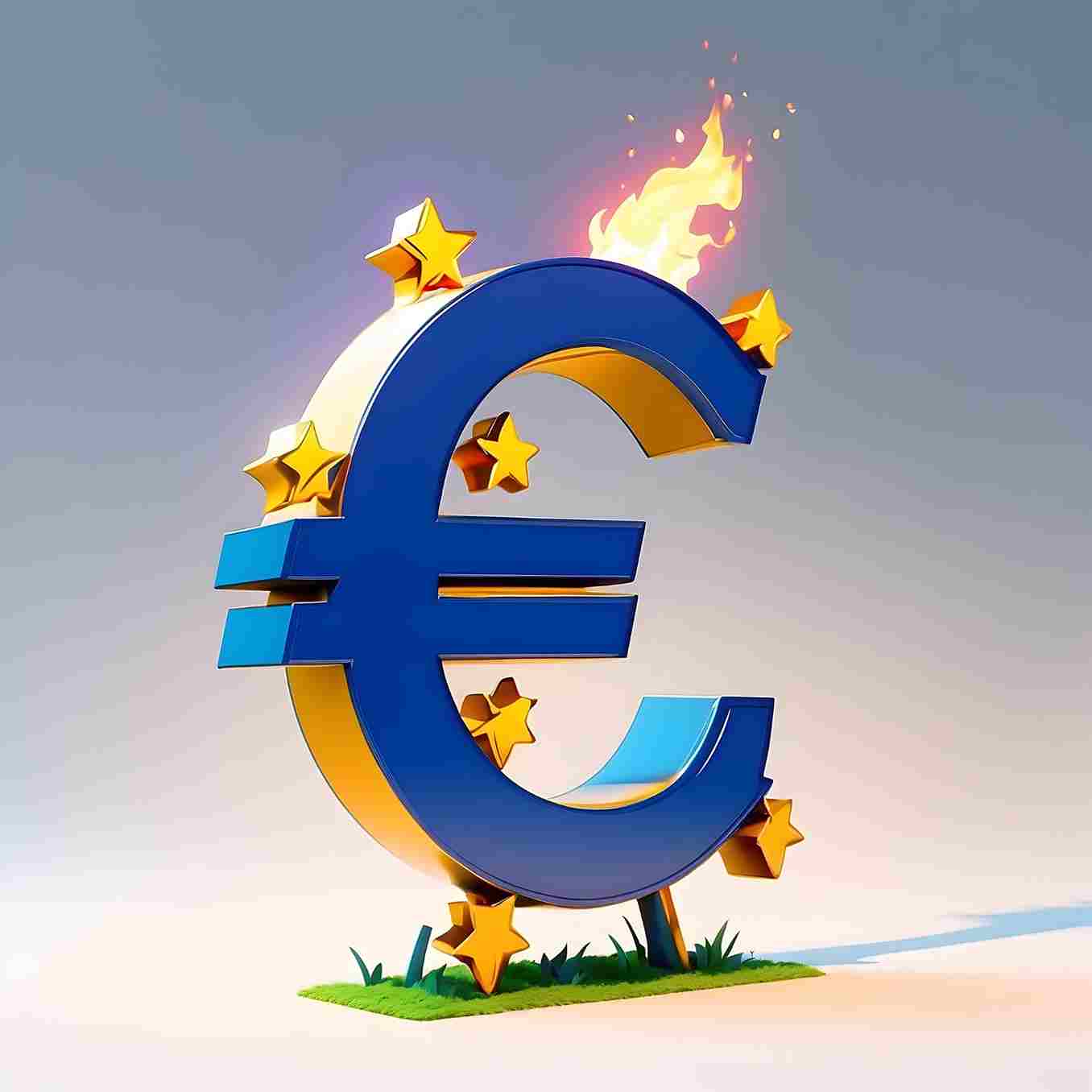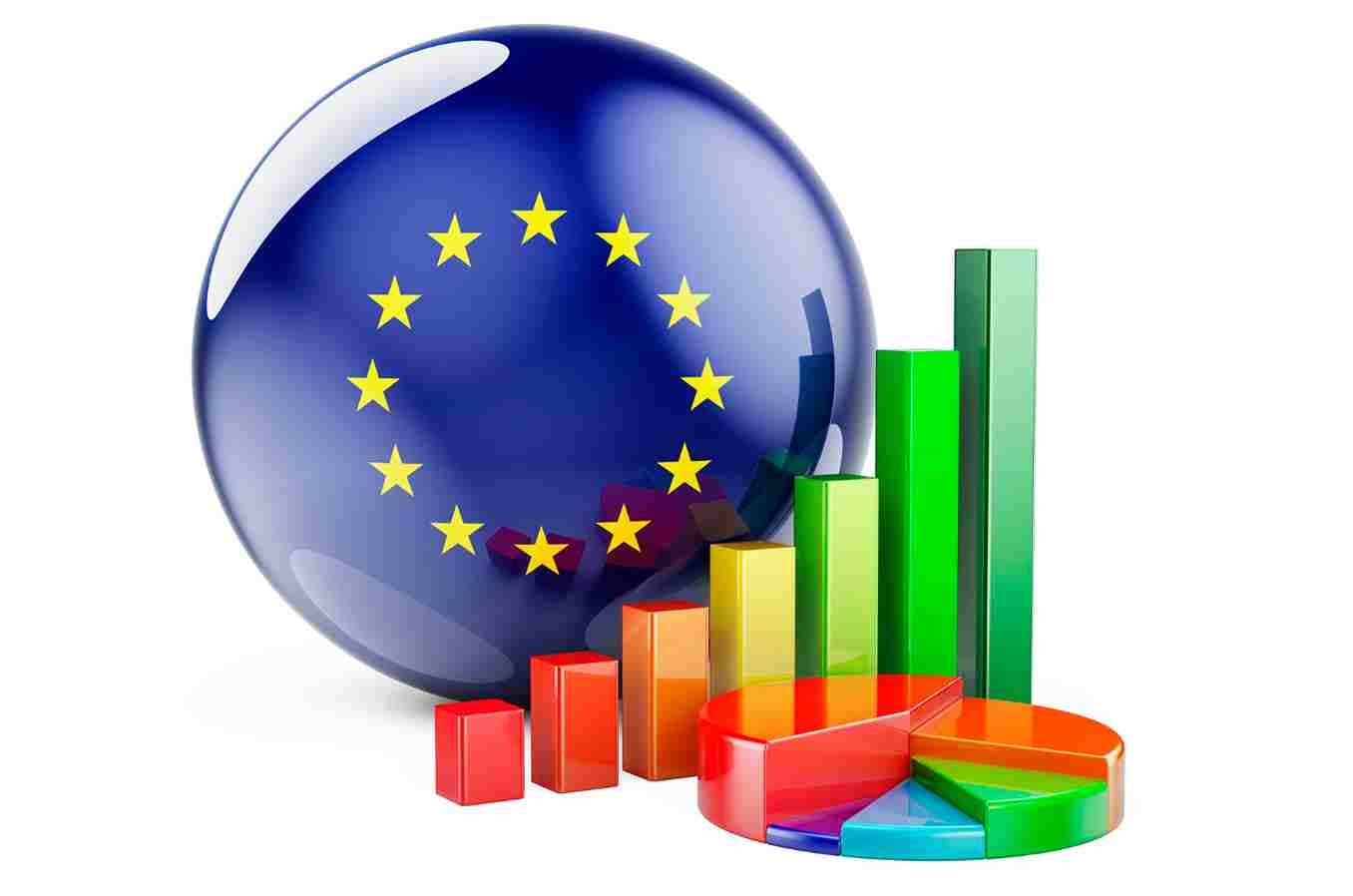
What is GDP and Why It Matters?
GDP stands for Gross Domestic Product, and it’s the total value of all goods and services produced over a specific time period within a region. It’s like the pulse of an economy, indicating how healthy or sick it is. For forex traders, GDP is crucial because it directly influences a country’s currency value.
A growing GDP typically leads to a stronger currency as it reflects economic strength and stability. Conversely, a declining GDP can weaken a currency, signaling economic trouble. This ebb and flow of GDP and currency values create trading opportunities that savvy forex traders can exploit.
Understanding Eurozone GDP
The Eurozone comprises 19 of the 27 European Union (EU) member states that have adopted the euro (€) as their common currency. The Eurozone GDP is the combined GDP of these countries. Tracking the Eurozone GDP is a bit more complex than monitoring a single country’s GDP because it involves multiple economies.
For forex traders, the Eurozone GDP report provides a comprehensive view of economic conditions across these member states. It’s released quarterly, and traders eagerly await it as it influences the euro’s strength or weakness against other currencies.
How Eurozone GDP Affects Forex Markets
When the Eurozone GDP data is released, it can cause significant volatility in the forex markets. If the GDP figures exceed expectations, the euro usually appreciates. This is because higher GDP suggests economic growth, which attracts investors and strengthens the currency. On the flip side, if the GDP figures disappoint, the euro can depreciate as investors seek safer investments.
For example, if the Eurozone GDP report shows robust growth, a forex trader might go long on the EUR/USD pair, anticipating the euro to gain value against the US dollar. Conversely, weak GDP figures might prompt a trader to short the EUR/USD pair.
Key Economic Indicators Related to Eurozone GDP
Several economic indicators are closely watched alongside the Eurozone GDP, as they provide context and deeper insights into the economic situation. These include:
1. Unemployment Rates
Unemployment rates are a critical component, as high unemployment can indicate economic distress, potentially leading to a lower GDP. Conversely, low unemployment often correlates with economic strength and higher GDP.
Inflation rates also play a crucial role. Moderate inflation suggests a growing economy, while hyperinflation or deflation can signal economic problems. Traders look at the Eurozone’s Consumer Price Index (CPI) to gauge inflation trends.
3. Industrial Production
Industrial production data reflects the output of factories, mines, and utilities. A rise in industrial production usually signals economic growth and can lead to a higher GDP, while a decline might indicate economic trouble.
Interpreting the Eurozone GDP Report

The Eurozone GDP report consists of several components, including:
1. Consumer Spending
Consumer spending is a major component of GDP. When consumers spend more, it boosts economic growth. Forex traders watch retail sales data and consumer confidence indexes to gauge spending trends.
2. Business Investment
Business investment is another critical component. Increased investment by businesses indicates confidence in the economy’s future, leading to higher GDP and a stronger euro.
3. Government Spending
Government spending on infrastructure, defense, and public services also contributes to GDP. Significant changes in government spending can impact GDP figures and influence forex trading strategies.
4. Net Exports
Net exports (exports minus imports) affect GDP as well. A surplus in net exports adds to GDP, while a deficit subtracts from it. Forex traders monitor trade balance reports to understand these dynamics.
Historical Trends and Their Impact on Forex Trading
Understanding historical trends in Eurozone GDP can provide valuable insights for forex traders. For instance, during the European debt crisis (2010-2012), the Eurozone GDP saw significant declines, causing the euro to weaken against other major currencies.
1. The Debt Crisis Era
During this period, several Eurozone countries faced severe economic challenges, leading to bailouts and austerity measures. Forex traders who anticipated the euro’s decline during this crisis could have capitalized on significant trading opportunities.
2. Post-Crisis Recovery
Post-crisis, the Eurozone GDP gradually recovered, and the euro regained strength. Traders who understood the recovery trends could position themselves advantageously in the forex market.
Recent Eurozone GDP Trends and Their Implications
In recent years, the Eurozone has faced various challenges, including Brexit, the COVID-19 pandemic, and geopolitical tensions. Each of these events has impacted the Eurozone GDP and forex markets differently.
1. The Impact of Brexit
Brexit created uncertainty in the Eurozone, affecting economic growth and the euro’s stability. Forex traders had to navigate this uncertainty, often seeing increased volatility in euro pairs.
2. COVID-19 Pandemic
The pandemic caused unprecedented economic disruptions, leading to significant GDP contractions in the Eurozone. Traders had to adapt quickly to the rapidly changing economic landscape, with many focusing on safe-haven currencies.
3. Geopolitical Tensions
Geopolitical issues, such as the Russia-Ukraine conflict, have also impacted the Eurozone GDP. These events can cause sudden shifts in market sentiment, creating both risks and opportunities for forex traders.
Strategies for Trading the Euro Based on GDP Data
Trading the euro based on GDP data requires a strategic approach. Here are some effective strategies:
1. Fundamental Analysis
Fundamental analysis involves studying economic indicators, including GDP, to make trading decisions. Traders analyze GDP reports, unemployment data, inflation rates, and other economic indicators to predict currency movements.
Technical analysis focuses on historical price data and chart patterns to forecast future movements. Traders use tools like moving averages, Fibonacci retracements, and RSI to identify trading opportunities around GDP data releases.
3. Sentiment Analysis
Sentiment analysis involves gauging market sentiment through news, social media, and other sources. Understanding market sentiment around GDP data releases can help traders anticipate currency movements.
Risk Management in Forex Trading
Effective risk management is crucial when trading forex, especially around significant events like GDP data releases. Here are some tips:
1. Use Stop-Loss Orders
Stop-loss orders help limit potential losses by automatically closing a trade at a predetermined price. This is essential when trading volatile markets influenced by GDP data.
2. Diversify Your Portfolio
Diversifying your portfolio by trading multiple currency pairs can reduce risk. Don’t put all your eggs in one basket; spread your investments to mitigate potential losses.
3. Stay Informed
Keep up with economic news and events that could impact the Eurozone GDP and forex markets. Staying informed allows you to make better trading decisions and manage risks effectively.
The Role of Central Banks in Eurozone GDP and Forex Trading
Central banks, particularly the European Central Bank (ECB), play a pivotal role in influencing the Eurozone GDP and forex markets. The ECB’s monetary policies, interest rate decisions, and economic outlook statements can significantly impact the euro’s value.
The ECB’s monetary policy, including interest rate adjustments and quantitative easing programs, directly affects economic growth and GDP. Traders closely monitor ECB announcements to anticipate currency movements.
2. Interest Rates
Interest rate decisions by the ECB influence borrowing costs, consumer spending, and business investment. Higher interest rates typically strengthen the euro, while lower rates can weaken it.
3. Economic Outlook
The ECB’s economic outlook statements provide insights into future economic conditions. Traders use this information to make informed trading decisions, anticipating how GDP trends will affect the euro.
Conclusion
Understanding Eurozone GDP and its impact on forex trading is crucial for any serious trader. By keeping an eye on GDP reports and related economic indicators, traders can make informed decisions, capitalize on trading opportunities, and manage risks effectively. Remember, the forex market is influenced by a myriad of factors, and staying informed is key to success.
FAQs
1. What is Eurozone GDP?
Eurozone GDP is the total value of all goods and services produced within the Eurozone. It’s a key indicator of economic health.
2. How does Eurozone GDP affect forex trading?
Eurozone GDP impacts the euro’s value. Higher GDP usually strengthens the euro, while lower GDP can weaken it, creating trading opportunities.
3. What economic indicators are related to Eurozone GDP?
Key indicators include unemployment rates, inflation rates, industrial production, consumer spending, business investment, government spending, and net exports.
4. How can I trade forex based on GDP data?
You can use fundamental, technical, and sentiment analysis to trade based on GDP data. Effective risk management strategies are also essential.
5. What role does the ECB play in Eurozone GDP and forex trading?
The ECB influences GDP through monetary policy, interest rates, and economic outlook statements. Traders monitor ECB actions to anticipate currency movements.







